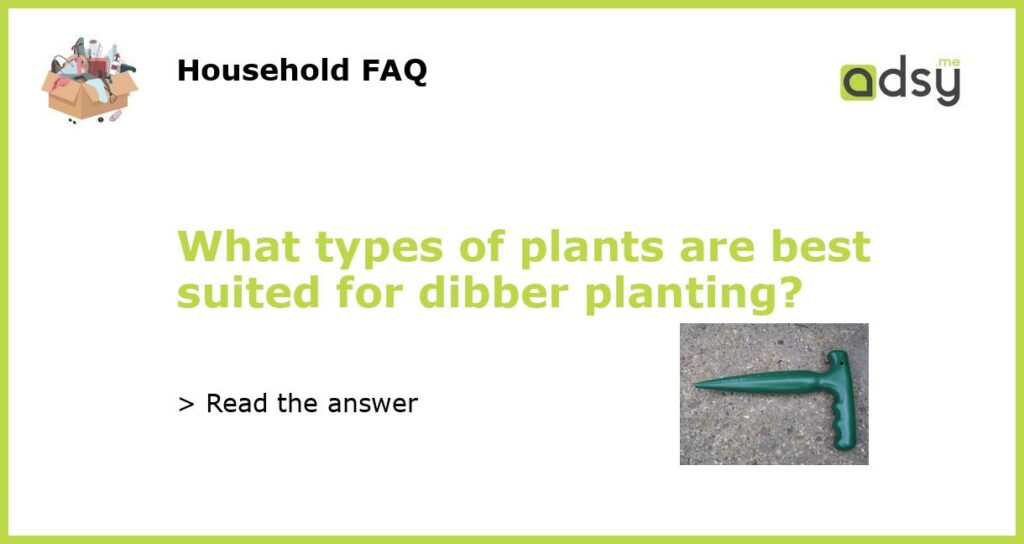Understanding Dibber Planting
Dibber planting is a gardening technique whereby a small hole is made in the soil to plant specific types of crops. It is ideal for planting seedlings or small plants and is commonly used for vegetables and herbs. Dibber planting is an effective way to ensure that plants grow in evenly spaced rows, maximizing space and avoiding overcrowding.
Plants That Thrive with Dibber Planting
Almost any type of plant can be grown using the dibber planting technique, but some thrive better than others. Generally, plants with small root systems are perfect for dibber planting. These include:
- Radishes, which germinate quickly and mature in just a few weeks
- Beetroot, which require adequate spacing and good drainage
- Carrots, which require deep planting to accommodate their long roots
- Lettuce, which can be grown in close proximity and harvested frequently
- Cilantro, which grows best when sown in shallow drills made with a dibber
Preparing the Soil for Dibber Planting
The first step in dibber planting is to prepare the soil. The soil should be loosened to a depth of at least 6 inches and enriched with organic matter such as compost or aged manure. The soil should then be leveled and compacted to create a flat surface.
Using a dibber, small holes should be made at regular intervals depending on the type of plant. The holes should be deep enough to accommodate the roots of the plant but not too deep to cause damage to nearby plants. Plants should be placed in the holes and the soil gently firmed around them to ensure they are in place.
Maintaining Dibber Plantings
After planting, it is important to maintain the dibber planting to ensure healthy plants. Regular watering is essential, especially during dry spells, and weeds should be removed as soon as they appear. Adequate spacing between plants is essential to prevent overcrowding and to allow proper air flow.
Additionally, using a starter fertilizer can help seedlings grow strong roots and promote healthy growth.
The Benefits of Dibber Planting
Dibber planting offers several benefits, including:
- Maximizing space by ensuring even spacing between plants
- Reducing water usage since plants are spaced out and not competing for moisture
- Making the garden look neater with evenly spaced rows
- Reducing the need for weeding due to the tight spacing of plants
- Ensuring that each plant has access to nutrients and adequate room for root growth






